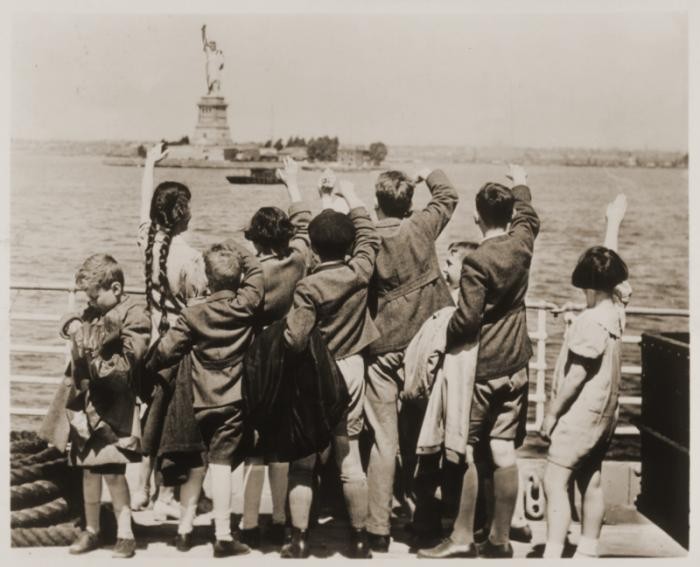
The United States and the Holocaust
The United States alone could not have prevented the Holocaust. However, more could have been done to save some of the six million Jews who were murdered by the Nazis and their allies and collaborators. The American response to news of the Holocaust was shaped by economic concerns, xenophobia, and antisemitism. American attitudes towards foreign policy and war also affected the US response.
Key Facts
-
1
Domestic concerns, including unemployment and national security, shaped Americans’ responses to Nazism. Widespread antisemitism and racism also made Americans less willing to aid European Jews.
-
2
The United States and the other Allied nations prioritized military victory over humanitarian considerations during World War II. Saving Jews targeted for murder by the Nazi regime and its collaborators was not the Allies’ wartime aim.
-
3
From 1933 to 1945, the United States admitted between 180,000 and 225,000 refugees who were fleeing Nazi persecution. The United States permitted entry to more refugees than any other nation. However, thousands more could have been granted US immigration visas had the quotas been filled during this period.
Americans generally had access to reliable information about the Nazi regime’s persecution of Jews as it happened. Most Americans sympathized with the plight of European Jews. However, that sympathy did not result in a concerted nationwide effort to assist refugees or rescue the victims of Nazism. In addition, most people could not imagine that a mass murder campaign was possible.
The economic devastation of the Great Depression, combined with a commitment to neutrality and deep prejudices against immigrants, limited Americans’ willingness to welcome refugees. Antisemitism further prejudiced Americans against Jewish immigrants in particular.
US Refugee and Immigration Policies of the 1930s and 1940s
The United States had no refugee policy in the 1930s or 1940s. Refugees fleeing persecution had to follow the process for immigrants, which was complicated and bureaucratic. The process was based on quotas, or numerical limits on the number of immigrants from various countries. President Franklin D. Roosevelt’s administration and the US Congress did not adjust that process to significantly aid refugees trying to flee Europe. Instead, the US State Department implemented new restrictive measures during this period. These measures made it more difficult for immigrants to enter the United States. The US government issued far fewer immigration visas than it could have between 1933 and 1945. Yet, more refugees fleeing Nazism entered the United States than any other nation in the world.
From Neutrality to War
When World War II began in September 1939, most Americans hoped the United States would remain neutral. Over the next two years, debates grew between isolationists and interventionists. Isolationists wanted the United States to stay out of war and focus on defending the Western Hemisphere. In contrast, interventionists favored proactively assisting Great Britain, even if it meant entering the war. While the debate raged, the United States slowly began to support the Allied powers.
Japan’s bombing of Pearl Harbor on December 7, 1941, ended this debate. The United States quickly declared war on Japan in response to the attack. Germany soon responded by declaring war on the United States.
The United States joined the Allies’ fight against the Axis powers (led by Germany, Italy, and Japan) to defend democracy, not to rescue Jewish victims of the Nazi regime. Late in the war, in January 1944, the US government created the War Refugee Board. The board was charged with trying to rescue and provide relief for Jews and other groups persecuted by the Nazis. During the final year of the war, US rescue efforts saved tens of thousands of lives.
In the spring of 1945, Allied forces, including millions of American soldiers, defeated Nazi Germany and its Axis collaborators. Their victory ended World War II in Europe and the Holocaust.
The US government never made the rescue of Jews a national priority, even though the American people knew about the Nazi persecution and later murder of Jews. The United States alone could not have prevented the Holocaust. More could have been done, however, to save some of the six million Jews who were murdered.
Critical Thinking Questions
What did the American people know about the events of the Holocaust? When and how was information about the Holocaust reported?
How did Americans view their role in the world when facing the threat of war?
How might a government and its citizens receive information about mass atrocity?
Examine the motives, pressures, and fears that shaped Americans’ responses to Nazism, war, and genocide.
What responsibilities do nations have if mass atrocities occur in another country or region?

